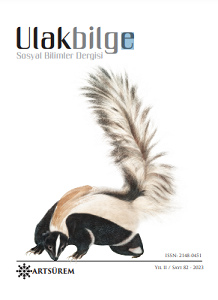MEKÂNDA DUYU KULLANIMI VE MİMARLIK FENOMENOLOJİSİ: TADAO ANDO ÖRNEĞİ
USE OF SENSORY IN SPACE AND ARCHITECTURAL PHENOMENOLOGY: TADAO ANDO EXAMPLE
Author(s): Rümeysa Reyna Erşan, Sibel DemirarslanSubject(s): Architecture, Phenomenology, Sociology of Art
Published by: Sanat ve Dil Araştırmaları Enstitüsü
Keywords: Space; perception; phenomenology; use of senses; Ando architecture;
Summary/Abstract: Although the concept of space contains many comprehensive meanings, it can be defined as the space arranged by the living thing and giving the living thing the right to live in safety. In order for the space, which is defined as a living space, to exist, it must first be perceived by individuals. In this context, space; It expresses a formation that is formed and developed through perception and gains meaning with experience and consciousness. The philosophy of "phenomenology", which emerged in the 20th century under the leadership of Edmund Husserl and deals with the science of perception and consciousness, also gives us information about how we perceive space. In this study, based on the basic concepts of consciousness and perception, it is aimed to form an idea about the phenomenon necessary for the perception of a space, the sensory stimulation necessary to activate the phenomenon, and the use of the senses in the field of architecture, as well as to obtain information about the relationship of these concepts with each other.A selection of important structures of Tadao Ando, one of the important names of sense use in space and architectural phenomenology, has been created and the signs have been interpreted and interpreted. The selections of Işık Church, Poly Grand Theater and Azuma House were analyzed in the context of phenomenology. Qualitative research techniques were used as a method. A detailed literature review on the subject has been made; Fundamental sources such as books, book chapters and articles were accessed, the indicators were interpreted and made sense of, and the research was completed through written sources. The aim of the study is to create an idea about how the use of senses in the space affects the perception of space, to guide the architects and interior architects who design space in the design process and to contribute to the literature.
Journal: Ulakbilge Sosyal Bilimler Dergisi
- Issue Year: 11/2023
- Issue No: 82
- Page Range: 235-247
- Page Count: 13
- Language: Turkish

